The Cleanest Village Class 4 Notes Maths Chapter 7 Free PDF
| Table of contents |

|
| Introduction |

|
| Daisy and Lou Go Shopping |

|
| A Strange Puzzle! |

|
| Add Up |

|
| Subtract It |

|
| Some Solved Examples |

|
Introduction
- In this chapter, we will learn about Mawlynnong, a small village in Meghalaya, India, which is known as "Asia's Cleanest Village."
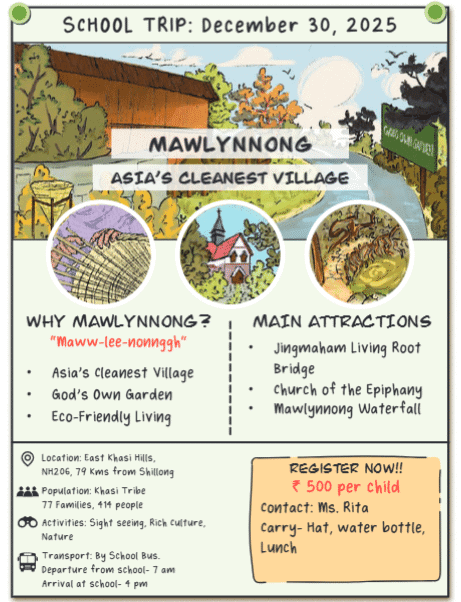
Daisy and Lou Go Shopping
- We will follow two students, Daisy and Lou, as they prepare for a school trip to this special place. Along the way, we will also practice our math skills by helping them with shopping and calculating costs.
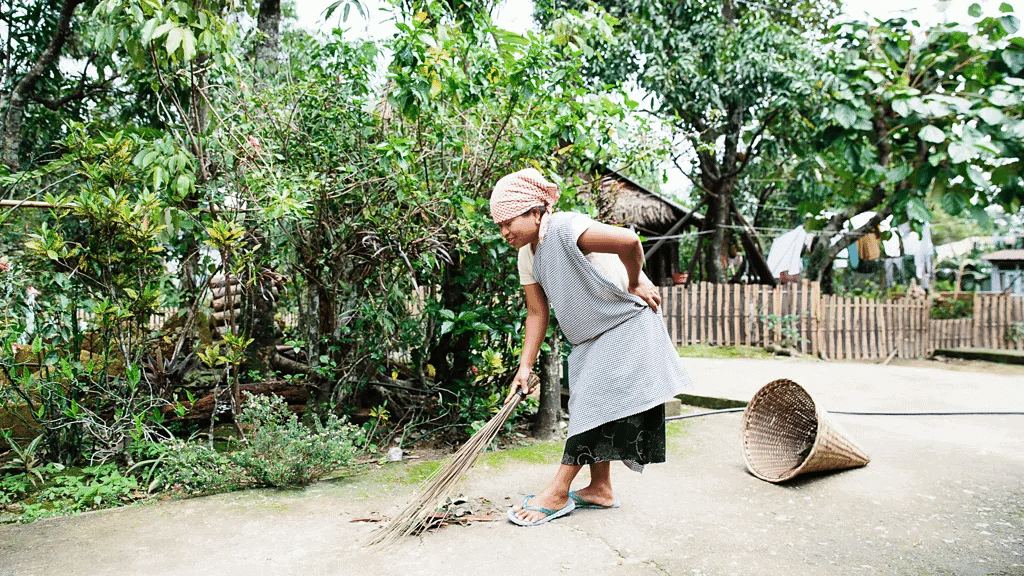 A woman in Mawlynnong sweeping the streets, which is a daily activity for all villagers
A woman in Mawlynnong sweeping the streets, which is a daily activity for all villagers
Daisy and Lou are very excited about their trip. They need to buy several things to prepare like Fruits and vegetables, Biscuits, Water bottles, Dry fruits etc.
They join their mother for the weekly shopping to buy these items.
At the Vegetable Cart
Sapan Dada has a cart for selling vegetables and fruits. The prices of the vegetables and fruits are:
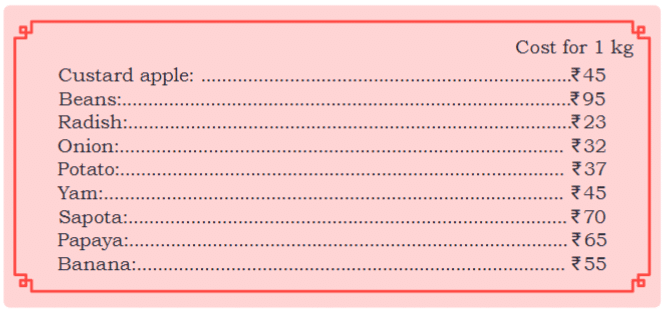
Sapan Dada asks Daisy and Lou to find the costs of different quantities of fruits and vegetables.
Let's help Daisy and Lou calculate the costs:
2 kg of beans = ₹ 95 × 2 = ₹ 190
1 kg of custard apple and 1 kg of sapota = ₹ 45 + ₹ 70 = ₹ 115
1 kg of onion and 1 kg of potato = ₹ 32 + ₹ 37 = ₹ 69
1 kg of radish and 1 kg of yam = ₹ 23 + ₹ 45 = ₹ 68
2 kg of radish and 2 kg of papaya = (₹ 23 × 2) + (₹ 65 × 2) = ₹ 46 + ₹ 130 = ₹ 176
2 kg of onion and 2 kg of potato = (₹ 32 × 2) + (₹ 37 × 2) = ₹ 64 + ₹ 74 = ₹ 138
At the Grocery Store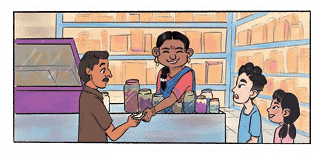
Udaya Didi runs a store selling rice, atta, daal, and spices. Daisy and Lou help Udaya Didi return the balance to customers while their mother buys the groceries.
Let's help them find the missing numbers:
- Cost: ₹ 113, Paid: ₹ 150, Balance: ₹ 37
(₹ 150 - ₹ 113 = ₹ 37)
- Cost: ₹ 185, Paid: ₹ 200, Balance: ₹ 15
(₹ 200 - ₹ 185 = ₹ 15)
- Cost: ₹ 200, Paid: ₹ 200, Balance: ₹ 0
(₹ 200 - ₹ 200 = ₹ 0)
- Cost: ₹ 435, Paid: ₹ 500, Balance: ₹ 65
(₹ 500 - ₹ 435 = ₹ 65)
- Cost: ₹ 149, Paid: ₹ 500, Balance: ₹ 351
(₹ 500 - ₹ 149 = ₹ 351)
- Cost: ₹ 46, Paid: ₹ 100, Balance: ₹ 54
(₹ 100 - ₹ 46 = ₹ 54)
- Cost: ₹ 125, Paid: ₹ 200, Balance: ₹ 75
(₹ 200 - ₹ 125 = ₹ 75)
- Cost: ₹ 580, Paid: ₹ 700, Balance: ₹ 120
(₹ 700 - ₹ 580 = ₹ 120)
- Cost: ₹ 250, Paid: ₹ 500, Balance: ₹ 250
(₹ 500 - ₹ 250 = ₹ 250)
A Strange Puzzle!
When we go to a shop and buy something, we pay money to the shopkeeper.
- If we give exact money, we don't get anything back.
- If we give more money than the price, the shopkeeper gives us balance (extra money we gave).
To find the balance, we use subtraction:
Balance = Money Paid − Cost of the item
Let's understand with an example:
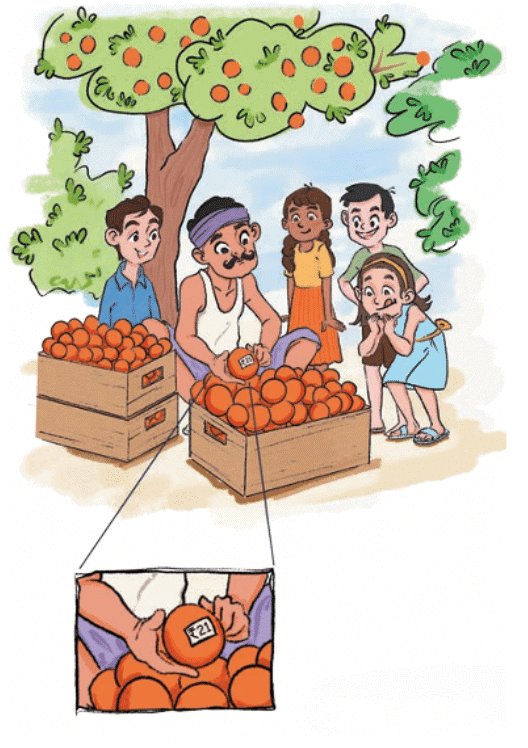
In the picture, 4 kids go for a walk and see fresh oranges.
The farmer says:
One orange costs ₹21
They each buy 2 oranges. So:
Cost = ₹21 + ₹21 = ₹42
Now, each child gives a different amount of money to the farmer. Let's find out how much balance each one should get back.
Krishna
Paid ₹50
Cost of oranges = ₹42
Balance = ₹50 − ₹42 = ₹8
Sudama
Paid ₹100
Cost of oranges = ₹42
Balance = ₹100 − ₹42 = ₹58
Mala
Paid ₹200
Cost of oranges = ₹42
Balance = ₹200 − ₹42 = ₹158
Neela
Paid ₹500
Cost of oranges = ₹42
Balance = ₹500 − ₹42 = ₹458
Add Up
Daisy and Lou are going on a trip. Two schools are sending teachers with the children.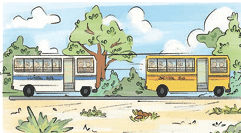 One school is sending 24 teachers and the other is sending 28 teachers.
One school is sending 24 teachers and the other is sending 28 teachers.
1. How many teachers are going in total?
Ans: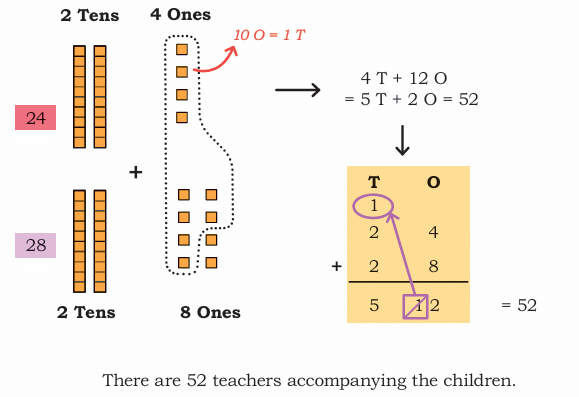
2. How many children are going on the trip?
Ans: 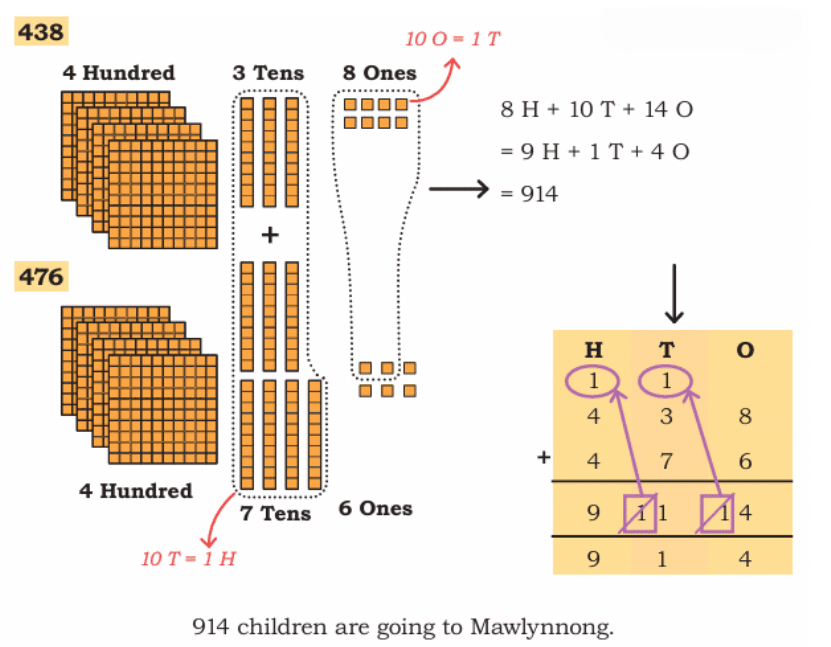
Subtract It
Subtraction means taking away a number from another number to find out how much is left or what the difference is.
Let's Understand with an Example.
The buses stopped for a snack on the way. 83 children bought Pusaw. 46 children bought fruit plates. How many more children bought Pusaw?
Ans: The difference between the children who bought pusaw and those who bought fruit plates is 83–46.
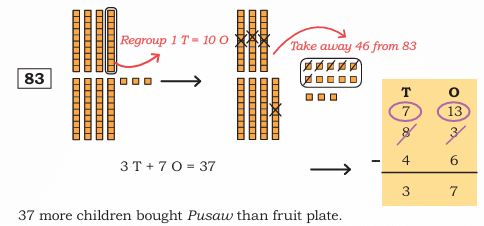
All 438 decide to visit the famous Living Roots Bridge in Mawlynnong village. First, 215 children go to see the Living Roots Bridge. How many children are waiting to visit the Living Roots Bridge?
Ans: The number of children who are waiting = 438–215.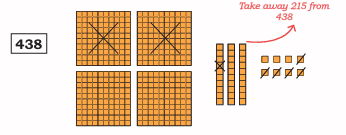

Lou and Daisy brought ₹ 310 in all. After spending on food and some gifts, they are left with ₹ 179. How much money have they spent till now?
Rupees spent = 310 - 179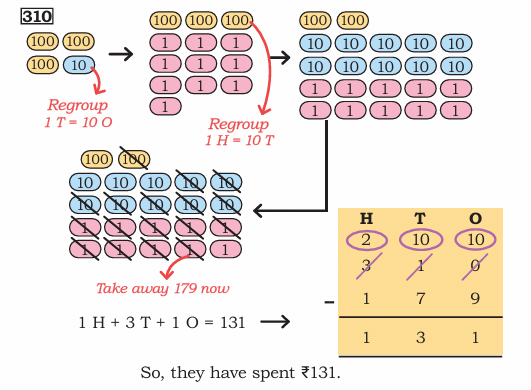
Some Solved Examples
Example 1: Sehaj and Seerat buy 1 kg of custard apple and 1 kg of sapota.
The price of custard apple is ₹45 and sapota is ₹70.
What is the total cost?
Sol: Cost of custard apple = ₹45
Cost of sapota = ₹70
Total cost = ₹45 + ₹70 = ₹115
The total cost is ₹115.
Example 2: Yuvish buys 2 oranges. Each orange costs ₹35 .He pays ₹100 to the farmer. How much money should he get back?
Sol: Cost of 2 oranges = ₹35 × 2 = ₹70
Money paid = ₹100
Balance = ₹100 − ₹70 = ₹30
Yuvish should get back ₹30.
Example 3: There are 438 children going to visit the Living Roots Bridge. 215 children go first. How many children are still waiting?
Sol: Total children = 438
Children who went first = 215
Children still waiting = 438 − 215 = 223
223 children are still waiting to visit the bridge.
|
54 videos|186 docs|14 tests
|
FAQs on The Cleanest Village Class 4 Notes Maths Chapter 7 Free PDF
| 1. What are the key concepts covered in the chapter "The Cleanest Village"? |  |
| 2. How can I practice giving change effectively? |  |
| 3. Why is estimating costs important in shopping? |  |
| 4. What strategies can I use to improve my addition and subtraction skills? |  |
| 5. How can I help my child understand the concept of balance when giving change? |  |















